Affiliate links on Android Authority may earn us a commission. Learn more.
Samsung Galaxy Note series: A history of innovation
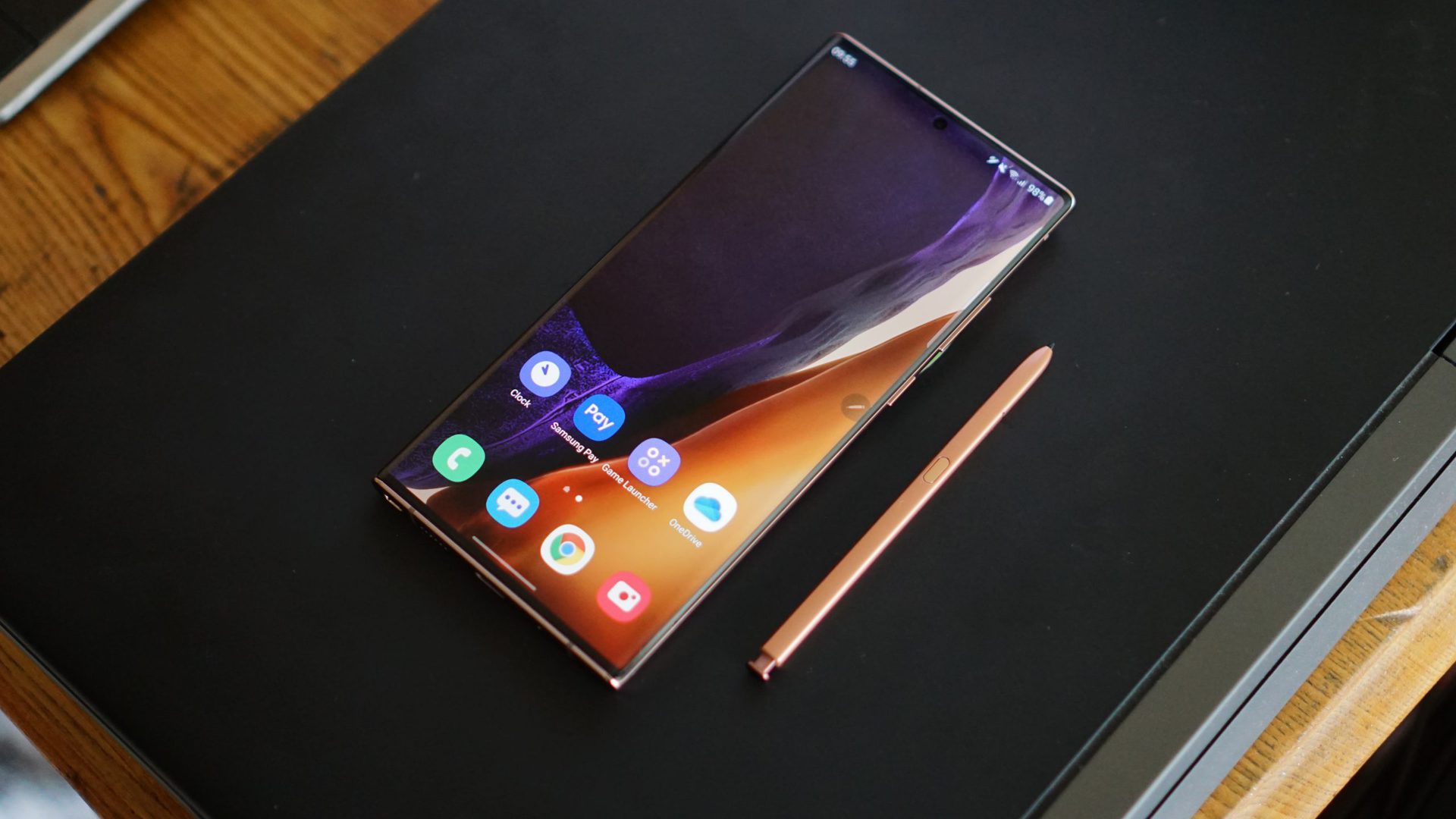
There are few smartphone product lines as iconic as the Samsung Galaxy Note series. Samsung’s Galaxy Note series has boldly gone where few phones have before.
Between the bleeding-edge tech, a focus on design, and a USP like none other, it was always a parallel flagship to the Galaxy S lineup. The series boldly embraced the stylus, a niche use case, and consistently innovated on it to make it more than just another pointing device.
While Samsung might have ended the Note line-up with the Galaxy Note 20 and Note 20 Ultra, we take a brief look at all the highs and lows of the long-standing smartphone series. From the original Galaxy Note that influenced the Android smartphone market for years to come to the short-lived Galaxy Note 7, and the one-two punch of the Galaxy Note 10 and Note 20 series.
The Galaxy Note Series: An overview
The Samsung Galaxy Note series was designed to cater to a burgeoning class of smartphone users who wanted a large-screen experience. When the phone launched, in 2011, some of the best Android smartphones on the market had screens that measured well under five inches. The Note was the antithesis of that. It positioned itself as a premium phablet that justified its large size with the presence of a stylus. Not only did the phone integrate an input mechanism that had been left behind with finger-first interfaces, but it also took it a step further by integrating pressure sensitivity for more creative use cases. The S Pen was born with it.
The Galaxy Note-series consistently pushed the envelope of technology and features.
The Samsung Galaxy Note series wasn’t just popular for its large size and stylus. The phones pushed the envelope of technology with every successive generation. They were some of the most feature-packed and powerful Android phones around. Be it the high-end processor, or some of the best cameras, the original Galaxy Note even included great video output capabilities back in 2011. It comes as no surprise that the Galaxy Note was a commercial success. It ended up selling over 10 million in just a short few months. The phone was the first widely successful phablet and cemented the future direction of the smartphone industry.
It would be fair to say that the Galaxy Note series inspired practically every smartphone maker to push toward larger displays. However, very few brands tried to co-opt the stylus. As such, the Galaxy Note was the sole premium option if stylus input was essential to you. Over the years, Samsung introduced at least 11 different models before bringing the highlight feature to the Galaxy S-series and the 3rd generation Z Fold. The list of all Samsung Galaxy Note models includes:
Here’s everything important you need to know about the Samsung Galaxy Note series of smartphones.
Samsung Galaxy Note: A bold statement (2011)
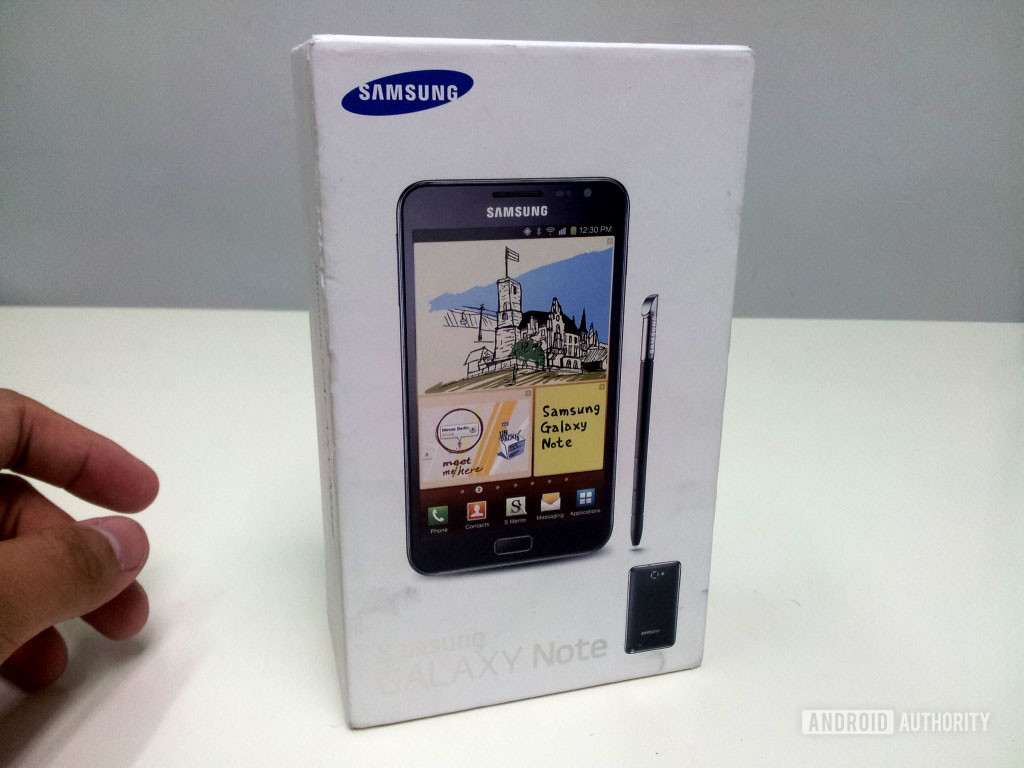
2011 was a landmark year in the smartphone industry. Nokia switched from Symbian to Windows Phone, Android Froyo was ironically the hottest thing around, and the Dell Streak with its 5-inch display was considered too big to ever be a thing (funny, right?).
In comes the Samsung Galaxy Note. Packing a whopping 5.3-inch display (lol), the phone was considered a behemoth, with reviews panning it as ridiculous and a phone with little mass appeal. It even brought back the stylus, an input mechanism that had been disregarded as archaic with the anvil of capacitive displays.
The original Galaxy Note went on to become one of the most influential smartphones and set the tone for Android flagships.
Shipping 10 million units, the phone shattered expectations and played a critical role in changing the widely held notion that users don’t want large displays.
In fact, it legitimized the phablet category through its use of top specs and a software package that made use of the pressure-sensitive stylus instead of just relegating it to a way to navigate the interface.
Samsung Galaxy Note facts:
- The original Galaxy Note debuted with an active digitizer with 256 levels of pressure sensitivity
- The phone shipped with Android 2.3 and got updates all the way to Android 4.1.
- While North America got the Qualcomm Snapdragon S3, many other regions got the Exynos 4210 variant.
- The 5.3-inch HD display was one of the largest of its time.
Samsung Galaxy Note 2: Refined iteration (2012)
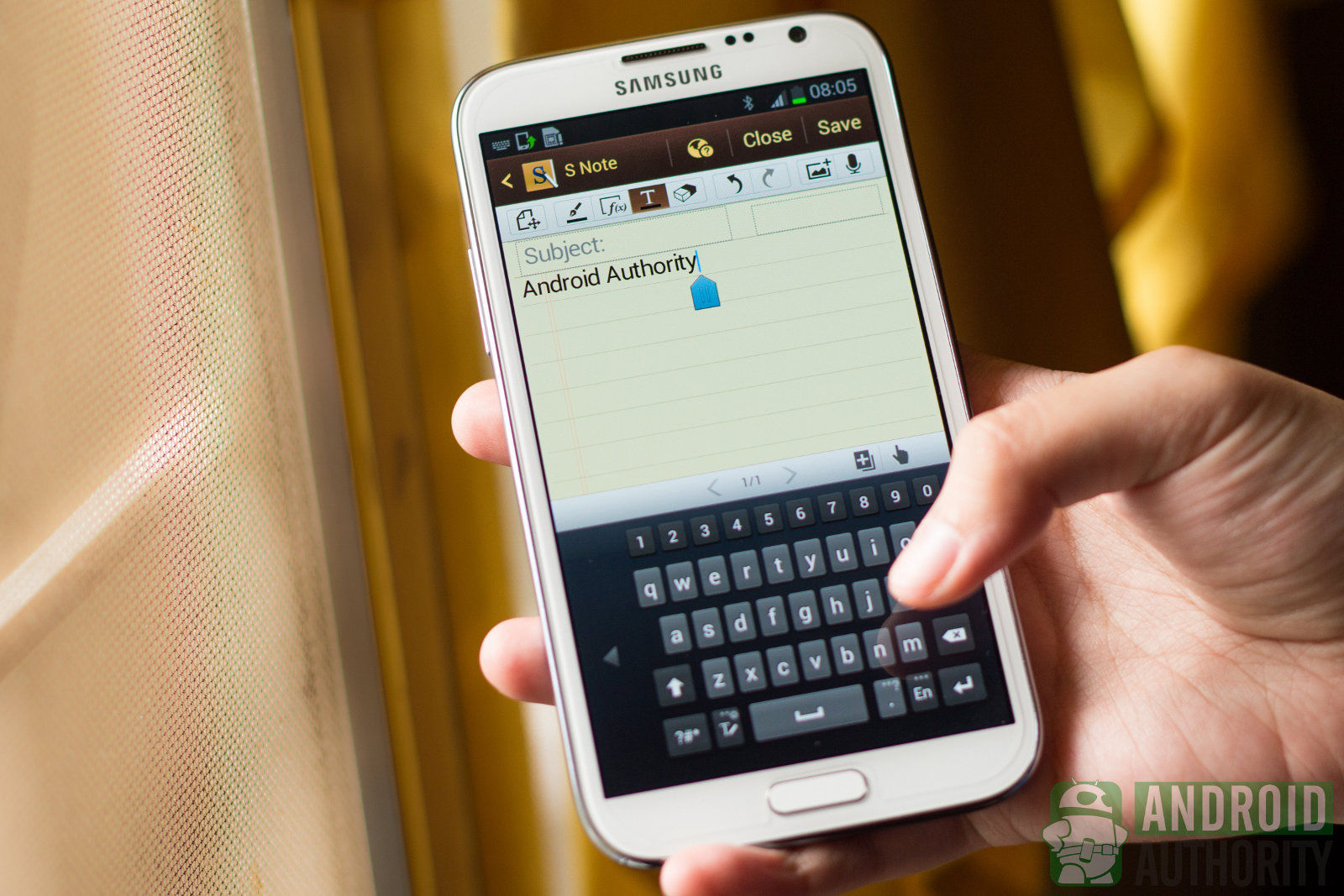
While the original Galaxy Note confirmed that there was a market demand for a stylus-equipped, large-display phone, 2012’s Galaxy Note 2 focussed on refining the experience. The refinements sat well with the audience, and Samsung managed to sell over 3 million units within two months of the device’s launch.
The curvier design facilitated a more ergonomic device. Samsung slimmed the Note 2 down in most dimensions, including the bezel, and this allowed Samsung to fit in an even larger 5.5-inch display panel without making the phone noticeably bigger.
Elsewhere, Samsung reduced the latency for stylus input, and the S Pen was improved to include new use cases. The Air View function allowed you to use the stylus as a pointer. Think of magnifying text in emails or contextual drop-downs for the calendar.
Samsung Galaxy Note 2 facts:
- The Galaxy Note 2 introduced the split-screen function for displaying two apps simultaneously.
- Samsung improved pressure sensitivity on the S Pen to 1024 levels for greater accuracy.
- The phone also debuted an Air View feature, which let you preview content by hovering the pen.
Samsung Galaxy Note 3: Better for business (2013)
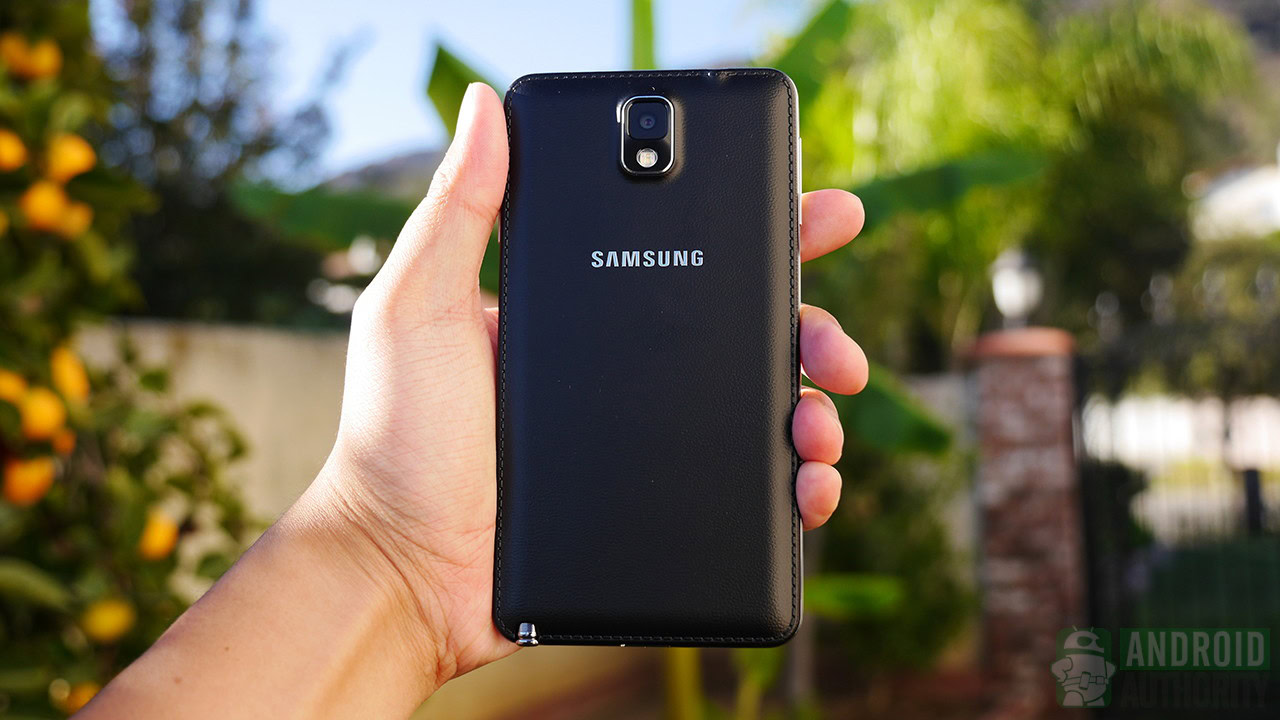
As the general public lapped up the large screen experience, Samsung wanted to tap another segment of users with the Note series — enterprise and business users.
With the Galaxy Note 3, Samsung upped the design game to make it more appealing to business users. The hardware was, of course, top tier with an even larger 5.7-inch display.
The Full HD panel was a first for the phone. In fact, Samsung packed the phone to the brim with features like 4K video capture, Gorilla Glass 3, a high-quality DAC, and a bevy of new sensors, including those for humidity and temperature data.
On the design side, Samsung paired the faux brushed aluminum look with a faux leather back. This added to the sophisticated vibe for the man-on-the-go demographic. The grown-up look and fresh new features ensured that the phone sold gangbusters.
Samsung managed to sell over 10 million units in the first two months, making it one of the best-selling premium smartphones of 2013.
The S Pen got a major feature update as well with the Air Command menu. The menu worked like a traditional right-click button and brought up quick access shortcuts for most used functions. This included a notepad that added support for linking to specific commands.
A lot of these features might seem like table stakes today. That said, Samsung’s drive towards eking more out of the stylus can’t be ignored.
Samsung Galaxy Note 3 facts:
- The Galaxy Note 3’s design was a mix of plastic leather and faux metal.
- The display got an upgrade to 1080p, as well as a bigger display size.
- The Galaxy Note 3 was the first phone to ship with 3GB of RAM.
Galaxy Note 4: The kitchen sink approach (2014)
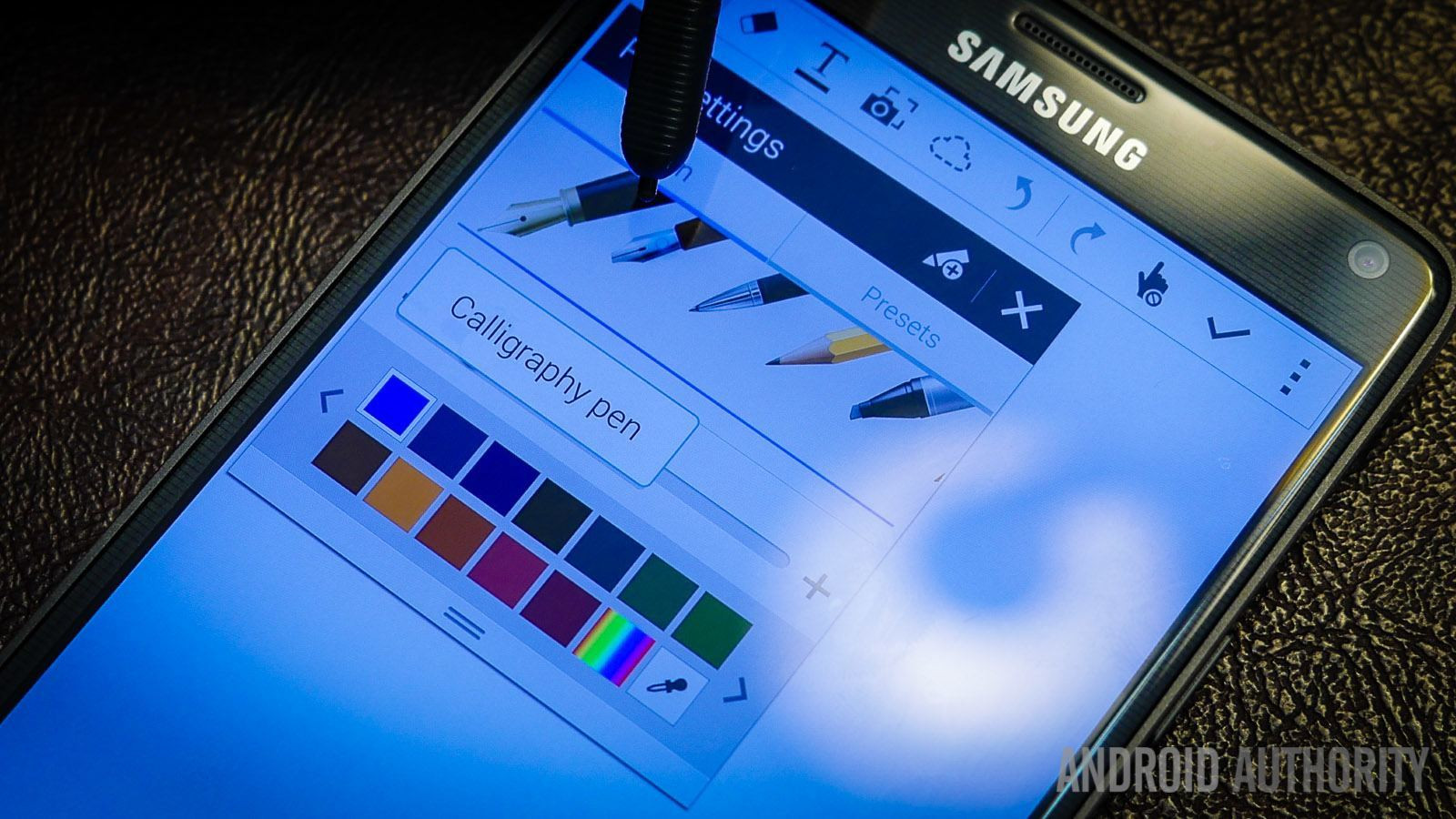
By 2014, the Galaxy Note series was already a force to be reckoned with. The large screen size, handy S Pen features, and top-tier performance made it a favorite among many users.
Samsung pivoted back to a standard plastic back to increase its appeal while adding an aluminum frame for a more premium look. Additionally, the screen resolution was bumped up to a Quad HD panel with Gorilla Glass 4, making it one of the best displays of its time.
Other features included a fingerprint reader in the home button and an improved 16MP camera. Samsung even tossed in OIS, a feature that is taken for granted today.
With the Note 4, Samsung started focussing on a broader ecosystem over just a hardware proposition.
By now, Samsung was pushing forward on a broader ecosystem over just selling phones. The Note 4 emphasized Samsung’s focus on fitness and health initiatives by integrating a heart-rate monitor and pulse oximeter over at the back of the phone.
Pressure sensitivity on the S Pen doubled to 2048 levels which allowed for a greater degree of control for drawing.
Samsung Galaxy Note 4 facts:
- The Galaxy Note 4 switched out the faux metal frame for aluminum.
- The digitizer was once again upgraded to support 2048 levels of pressure.
- The phone featured a UV ray measurement sensor in addition to a heart-rate monitor and SpO2 sensor.
Galaxy Note Edge: Let’s experiment (2014)
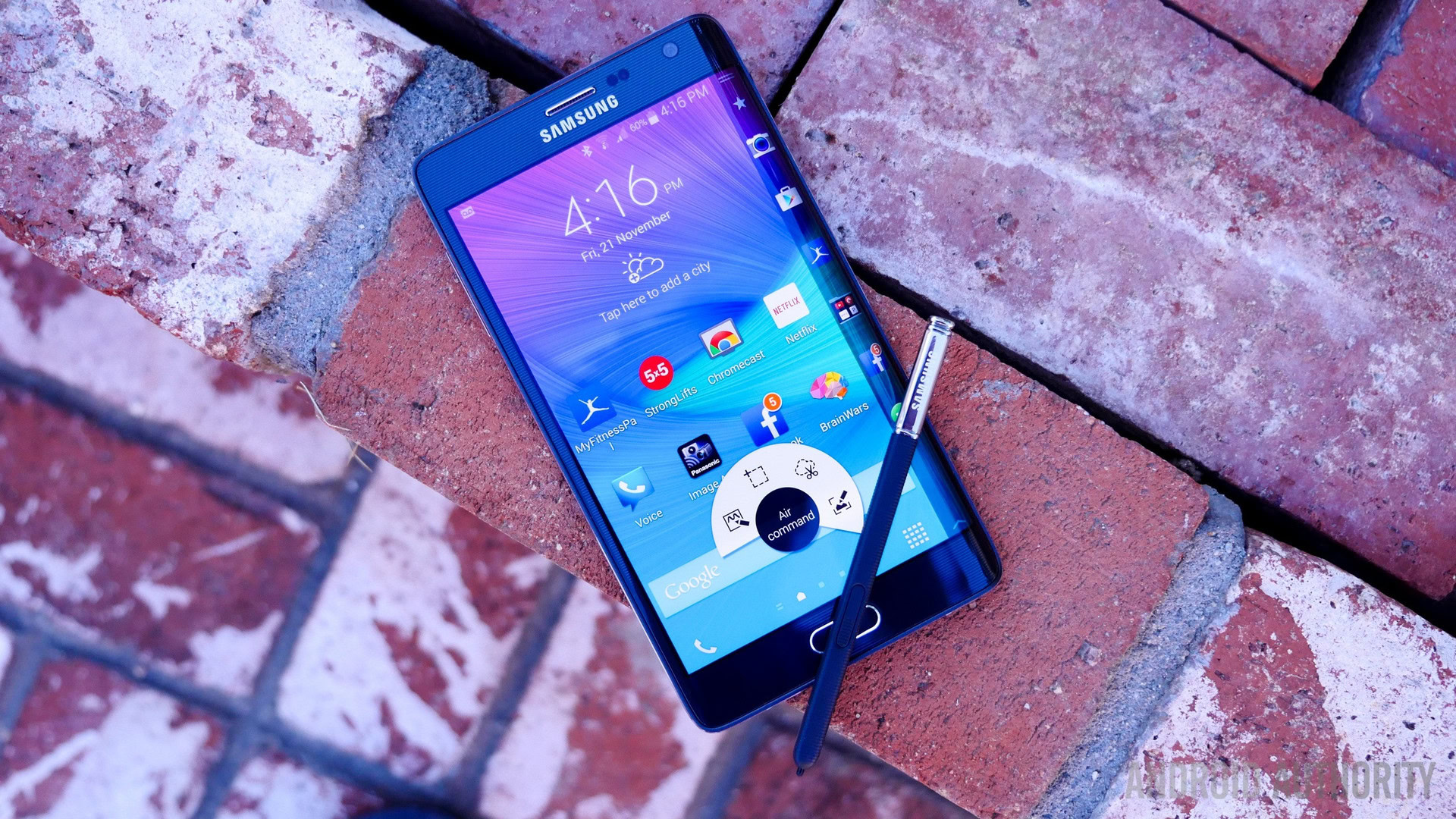
Once the Galaxy Note series had cemented its place as a strong seller and part of Samsung’s flagship lineup, the company decided it was time to experiment a bit, and the result was the Galaxy Note Edge.
While the spec sheet was identical to the Note 4, the Edge took bold steps forward in an edgy way. Bad puns aside, this was the first high-profile attempt to add a usable curved display to a mainstream phone. The curved edge included a sidebar that could be used to display different panels as well as shortcuts to applications.
Samsung further opened up API access to developers to build apps that could sit along the side of your primary apps for faster access. Additionally, a nifty feature was the ability to display a clock on the edge panel along the side of the phone, even with the display switched off.
Galaxy Note Edge facts:
- The phone first debuted as the “Youm” concept phone at CES 2013.
- The Note Edge was one of the first phones to ship with a curved display.
Galaxy Note 5: Swiss Army Knife (2015)
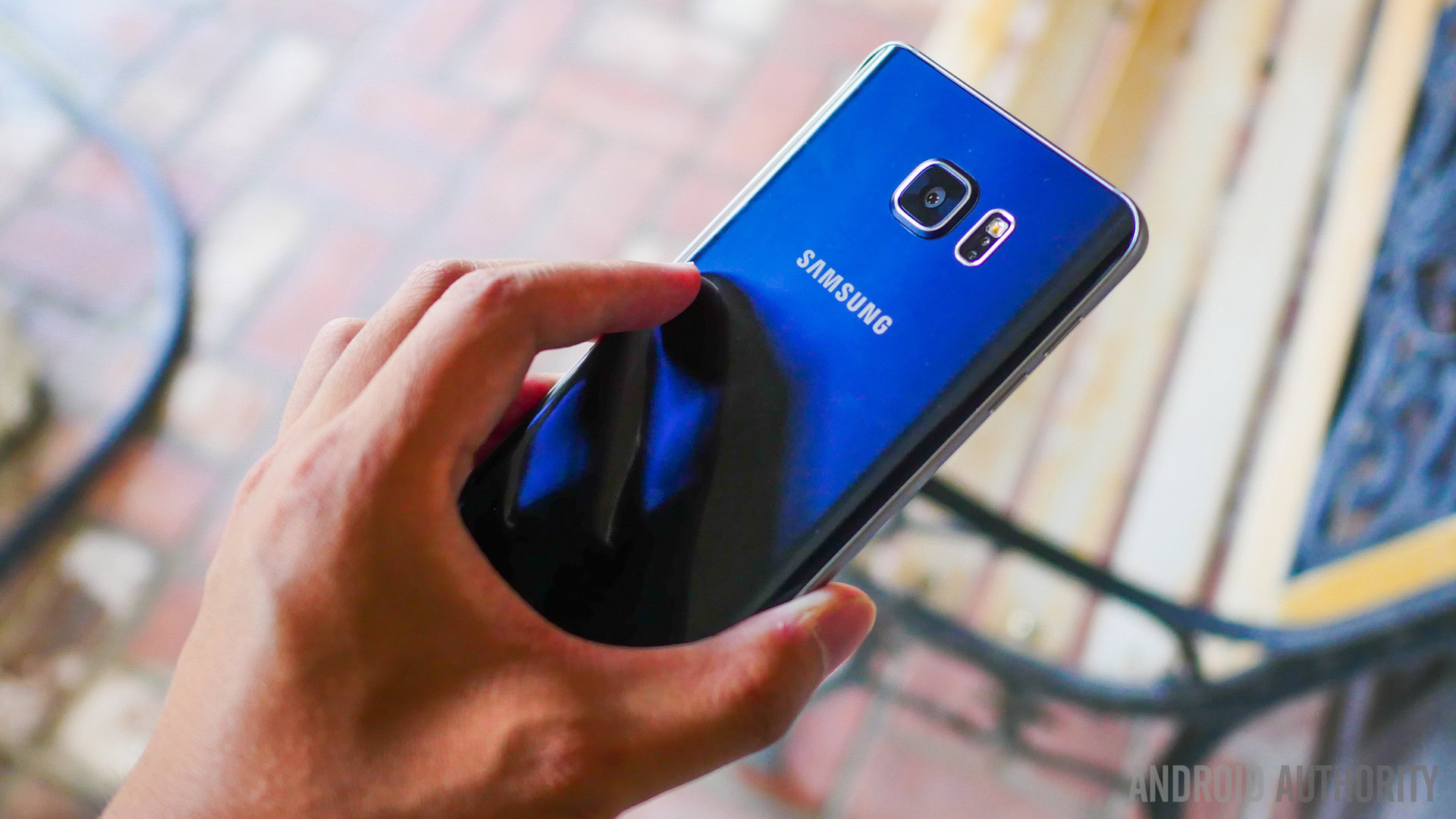
Released in 2015, as part of its yearly refresh cycle, the Galaxy Note 5 improved in all the obvious places. Of course, the processor got faster, but more importantly, the design and finish got a serious upgrade.
The Note 5 was an all-glass and metal design with a focus on ergonomics and usability. Unfortunately, the phone veered a bit too much towards being an approachable, consumer-friendly device and cut down on some much-appreciated features.
To start with, the Galaxy Note 5 didn’t have a removable battery. Bigger still, the phone also got rid of the microSD card slot. A design flaw broke the spring-loaded S Pen assembly if the stylus was incorrectly inserted. Despite the issues, the Note 5 broke sales records for the series and continued the streak of being one of the most popular phones that year.
Samsung Galaxy Note 5 facts:
- The Galaxy Note 5 debuted a glass back as well as a spring-loaded stylus.
- If inserted in reverse, the stylus would jam up, resulting in a minor design revision.
- It also started the trend of sealed batteries on the Note series.
Galaxy Note 7: Crash and burn (2016)
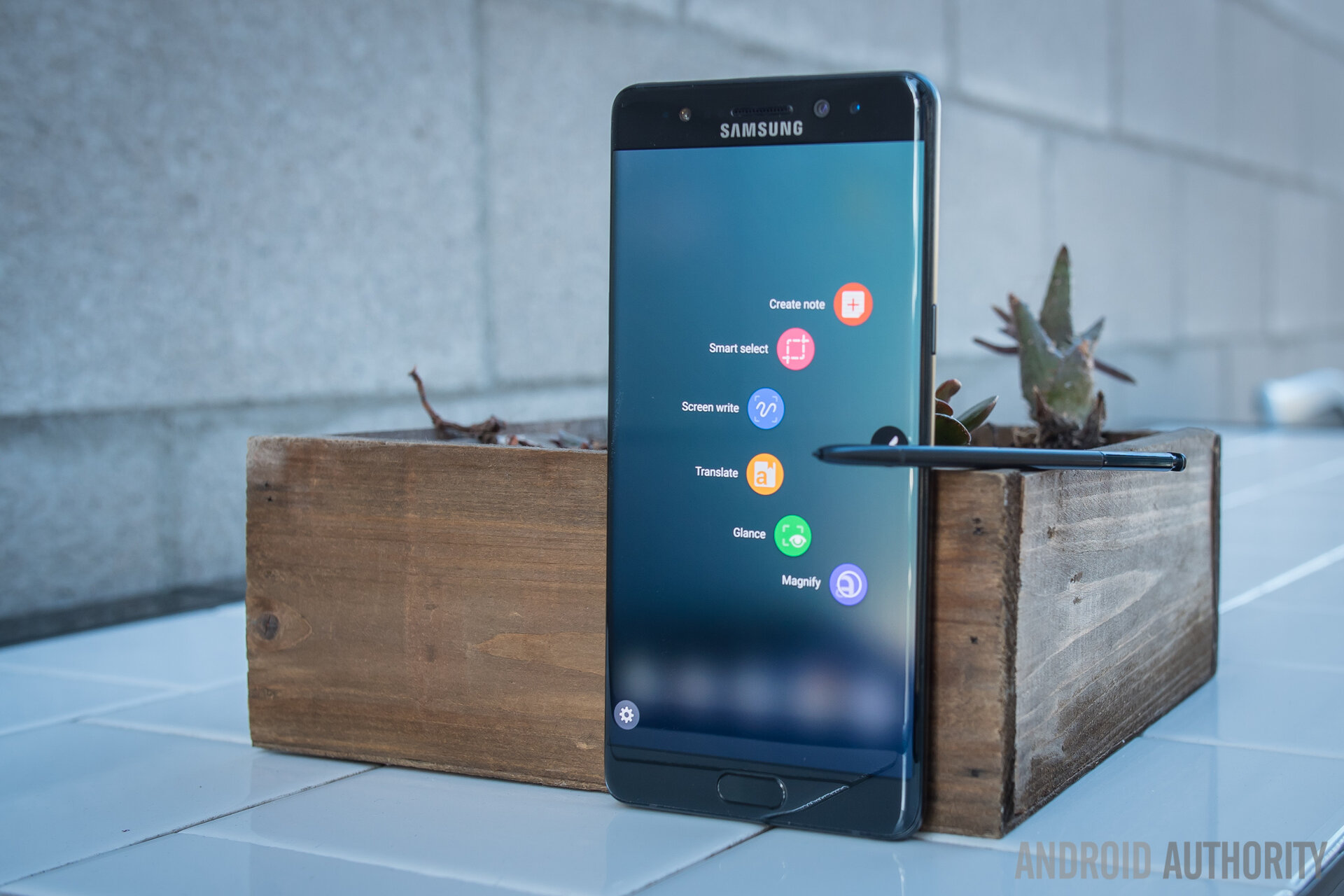
Yes, Samsung skipped the number six altogether and launched the now-infamous Galaxy Note 7. Not so lucky, after all! The Galaxy Note 7 had a lot going for it, with the phone being the first in the series to sport a USB-C connector. It also brought back expandable storage that had been cut out on the Note 5, in addition to an IP68 rating. It also took cues from the Galaxy Note Edge to integrate dual curves, though the curvature wasn’t quite as dramatic, or as helpful.
With the Note 7, Samsung gave the S Pen brand new abilities. These included translation features, a screen magnifier, and the ability to record GIFs. The device combined the new-fangled iris scanner with Samsung Pass, which allowed it to be used for secure payments. The Note 7 even brought back the microSD card slot, a much-missed feature on the Note 5.
Like a phoenix from the ashes, the Note 7 was reborn as the Note 7 FE a year after its demise.
The phone was a thorough upgrade to the series and excitement was high. The Galaxy Note 7 broke pre-order numbers in Samsung’s home market of South Korea but demand was high elsewhere too.
However, soon after the Galaxy Note 7 launched in August 2016, reports started to come in from many owners that the phone was overheating and even exploding. At first, Samsung issued a recall of the phone, but even some of the replacement Note 7 models started catching fire. Samsung finally pulled the plug on the Note 7 less than two months after its initial launch.
Like a phoenix from the ashes, the phone resurfaced in mid-2017. Refurbished Note 7 models, with smaller batteries, were sold in select Asian countries under the Galaxy Note Fan Edition branding. This version of the phone was also the first in the Note series to include Samsung’s Bixby digital assistant out of the box.
Samsung Galaxy Note 7 facts:
- The phone introduced an infrared-based iris recognition system for secure unlocking.
- Samsung shipped fireproof boxes to customers for safe returns.
- A software update was pushed later that completely disabled the smartphone functionality on the Note 7.
- Refurbished Note 7’s came back as the Galaxy Note 7 Fan Edition with a smaller battery and new safety features.
Galaxy Note 8: Reestablishing the series (2017)
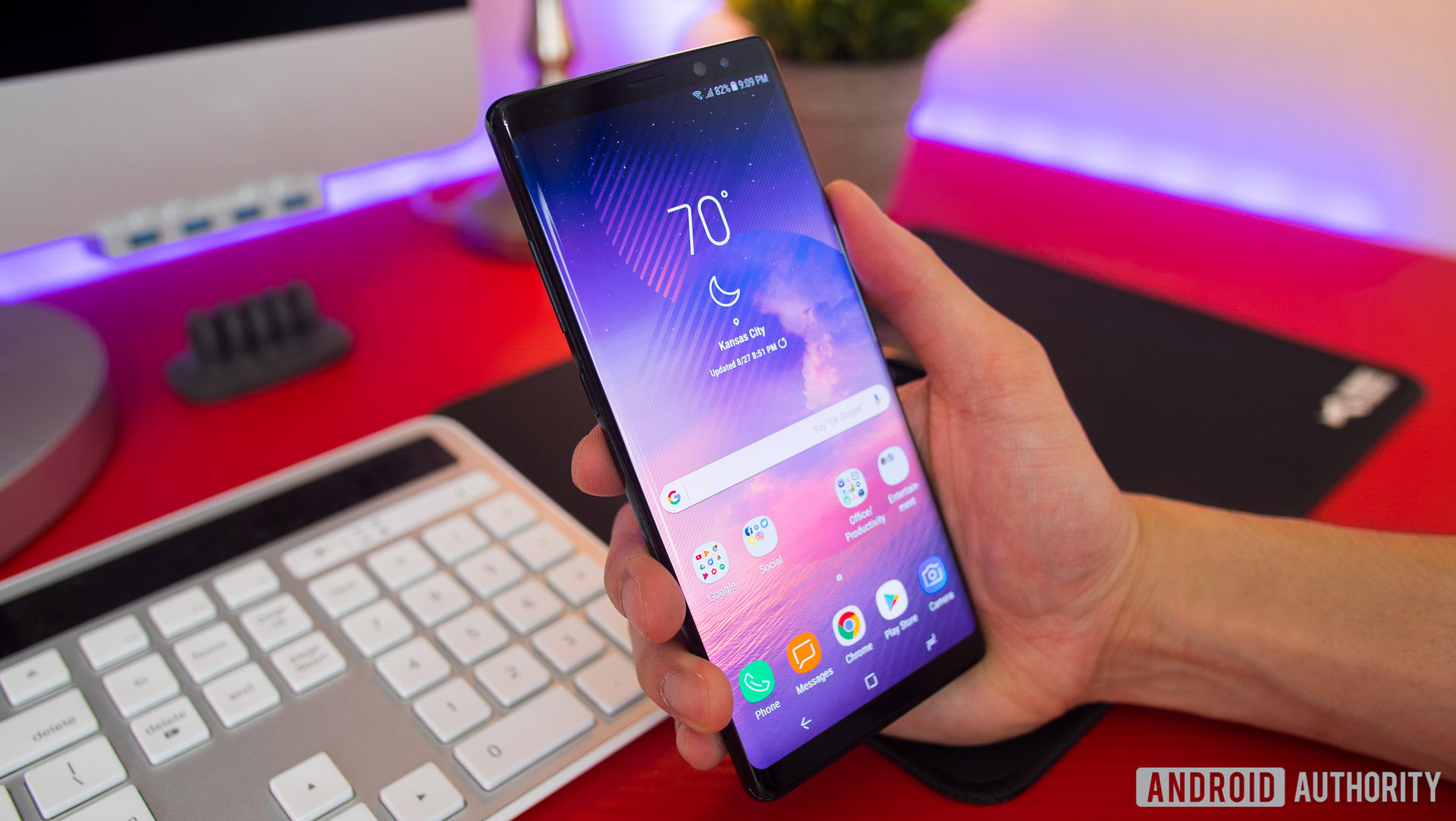
Following the debacle that was the Galaxy Note 7 launch, Samsung had to prove itself all over again. The company played it safe with the Galaxy Note 8. It made some concessions, like a smaller battery, to avoid any potential issues.
Specs upgrades were a given, but Samsung also debuted Dex on the Note 8. This feature allowed buyers to use the Galaxy Note 8 as a computer when plugged into a monitor and keyboard. It was also the first Note series device to feature two cameras. These were a 12MP primary camera and a 12MP telephoto lens.
Combined with Samsung’s handling of the Note 7 disaster and the all-around improvements to the phone, the Note 8 sold record numbers, with over 270,000 units sold just on the first weekend of sales.
By the way, this was the first Samsung Galaxy Note to get Bixby!
Galaxy Note 8 facts:
- The Galaxy Note 8 was the first phone in the series to include a dual-lens camera system.
- The phone also included a dedicated key for Samsung’s Bixby virtual assistant.
- A new ‘screen-off memo’ feature let you add notes directly to the locked home screen.
- The refreshed camera app allowed you to adjust the intensity of background blur both before and after capturing the image.
Galaxy Note 9: Lack of innovation (2018)
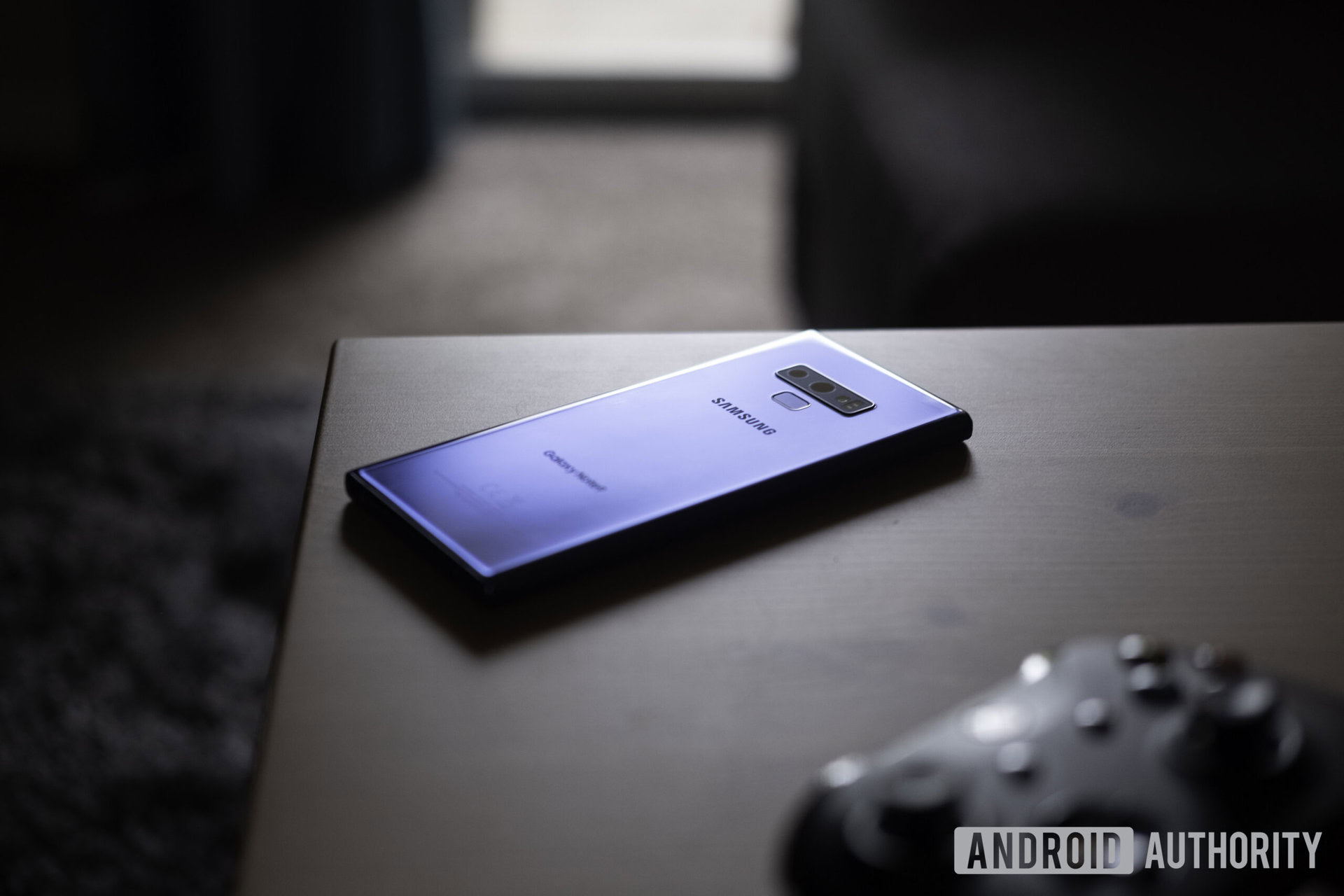
By 2018, the Note series was regarded as the true flagship series in Samsung’s yearly line-up. These were always superior to their Galaxy S counterparts. The Galaxy Note 9 was an iterative update in many ways, but that doesn’t mean that it was lacking in features. True to form, it had a top-of-the-line chipset and was the first Samsung phone to offer up to 8GB of RAM and 512GB of storage.
With the Note 9, Samsung focussed on refinement and now allowed for Dex support without the use of a dock. It also added a carbon heat pipe for better heat dissipation during gaming.
The biggest upgrades, however, came to the S Pen. Now, with expanded Bluetooth capabilities and a built-in battery, the stylus could be used as a shortcut for actions and to move forward or backward in presentations, in addition to other use cases.
The slowing pace of innovation, however, is reflected in sales. The Galaxy Note 9 just about managed 9.6 million in sales, lower than the Note 8, and it made the diminishing demand for Samsung’s premium smartphones very obvious.
Galaxy Note 9 facts:
- The S Pen included a battery that charged via the slot at the bottom of the phone.
- A 40-second charge was enough for 30 minutes of use.
- The Galaxy Note 9 was the last phone in the Note series to include a headphone jack.
Galaxy Note 10 series: One phone, two sizes (2019)
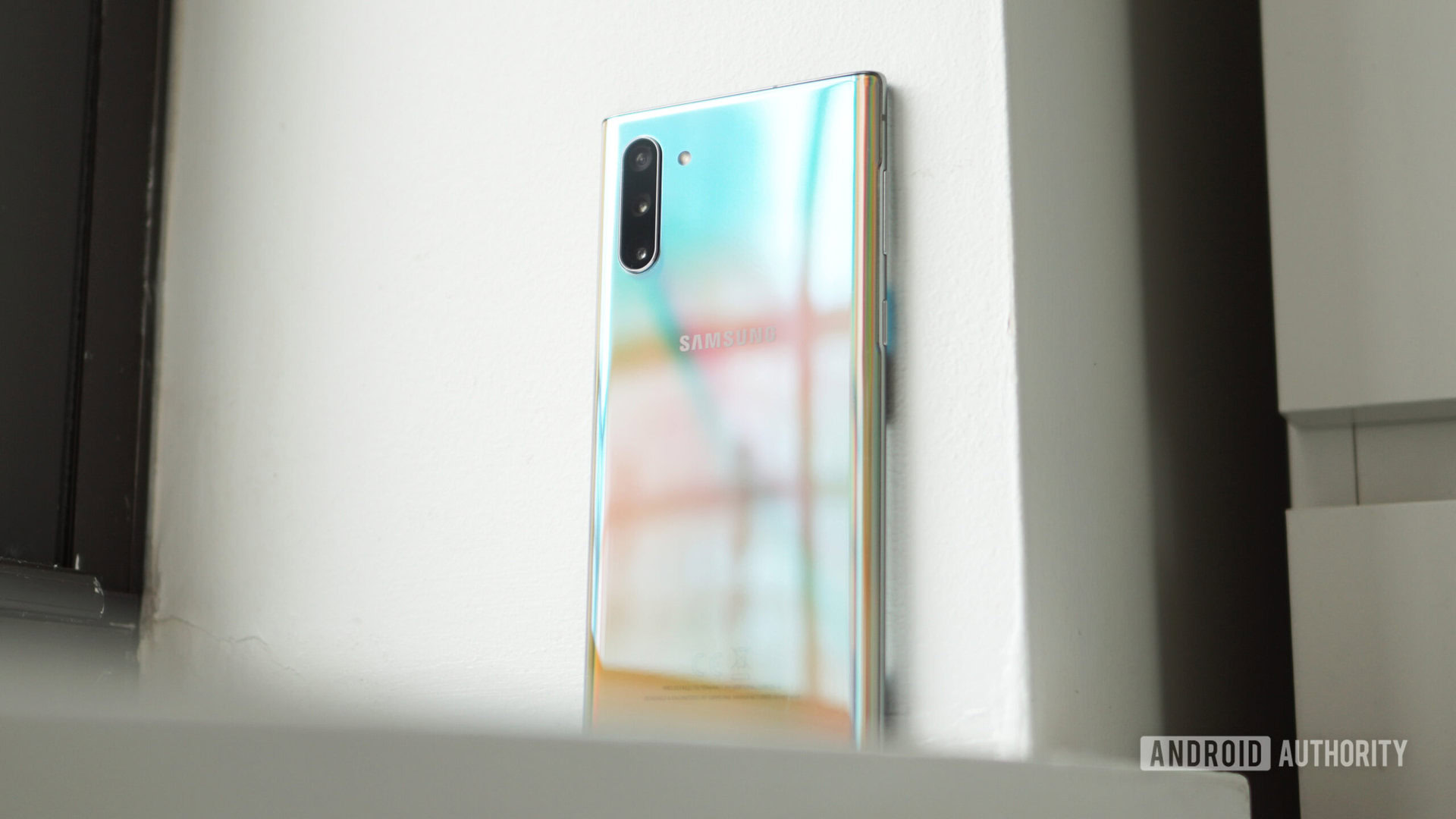
With phones getting ever larger, it was time for a pivotal decision. The Galaxy Note 10 debuted with not one but two separate models; the Galaxy Note 10 and Note 10 Plus. These two models also allowed Samsung to target multiple market and price segments, an important move after the less-than-stellar sales of the Galaxy Note 9.
The larger of the two packed a massive 6.8-inch AMOLED display with features like dynamic tone mapping for better color accuracy. Owing to the size, the phone was ever so slightly taller, with a 19:9 aspect ratio. Meanwhile, the smaller model packed a still large 6.3-inch Full HD display albeit with much trimmed-down physical dimensions.
Screen size aside, the phones had a lot in common, including the processor and camera setup. Both models debuted a new 16-megapixel ultrawide camera, in addition to the dual-aperture primary and telephoto lenses.
Like every year, the S Pen was also updated and now could control the phone remotely.
The two Galaxy Note 10 models were largely similar with the display and battery sizes being the key differences.
To differentiate the two models, Samsung gave the Note 10 Plus a larger 4300mAh battery while the regular model had a smaller 3500mAh cell. Meanwhile, the larger phone could be charged at up to 45W while the regular model dropped this to 25W. Finally, in a first, the Galaxy Note 10 dropped the 3.5mm jack.
The Galaxy Note 10 series shattered sales records in South Korea and sold a million units in the first 25 days of sale. In fact, the smaller dimensions helped bring in another demographic into the fold. Samsung revealed that there was an uptick in female customers for the Note series.
Galaxy Note 10 series facts:
- The phone was the first to feature an Infinity-O display with a selfie camera cut-out.
- The Galaxy Note 10 integrated the power button into the Bixby button. It also brought with it an option to disable the shortcut for Samsung’s assistant.
- Samsung introduced a cut-down version called the Galaxy Note 10 Lite. It swapped processing power and display specs but retained fast charging, stylus input, and added a headphone jack to the mix.
Galaxy Note 20: A bold new look (2020)
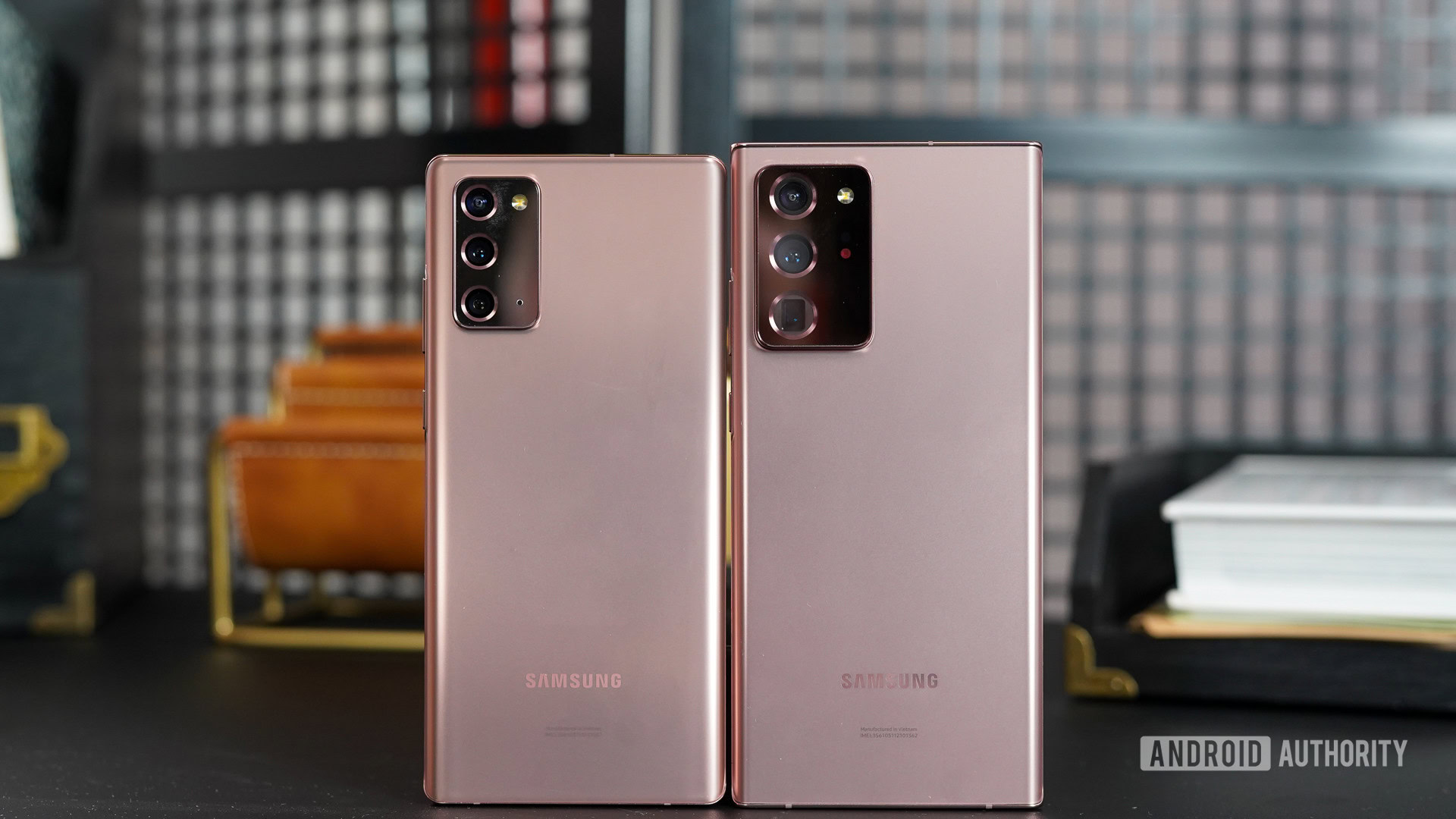
This brings us to Samsung’s last and, perhaps, the greatest Note phones. The Note 20 series kicked everything up a notch. The design shared similarities with the Note 10, but the two models were a significant upgrade in most ways.
Let’s start with the Galaxy Note 20 Ultra. The big honking chunk of aluminum shipped in a gorgeous new mystical bronze shade. The camera module had a uniquely chiseled look that stood out. However, some might find it to protrude out a bit too much. The bold camera design served as the basis of the Samsung Galaxy S21 Ultra’s camera unit, and the inspiration is evident even in the Galaxy Fold 3. The Note 20 Ultra, for the most part, took all the good bits from the Note 10 Plus and refined it to a tee.
The display got a bump up to a 120Hz refresh rate for silky smooth navigation, and the S Pen latency was also brought down to just 9ms on the Note 20 Ultra.
Meanwhile, the Note 20 Ultra cribbed significantly from the Galaxy S20’s camera setup. This included a 108MP primary sensor paired with a 12MP telephoto sensor capable of 5x zoom. Elsewhere, the phone sported a 12MP ultrawide camera for those sweet landscape shots.
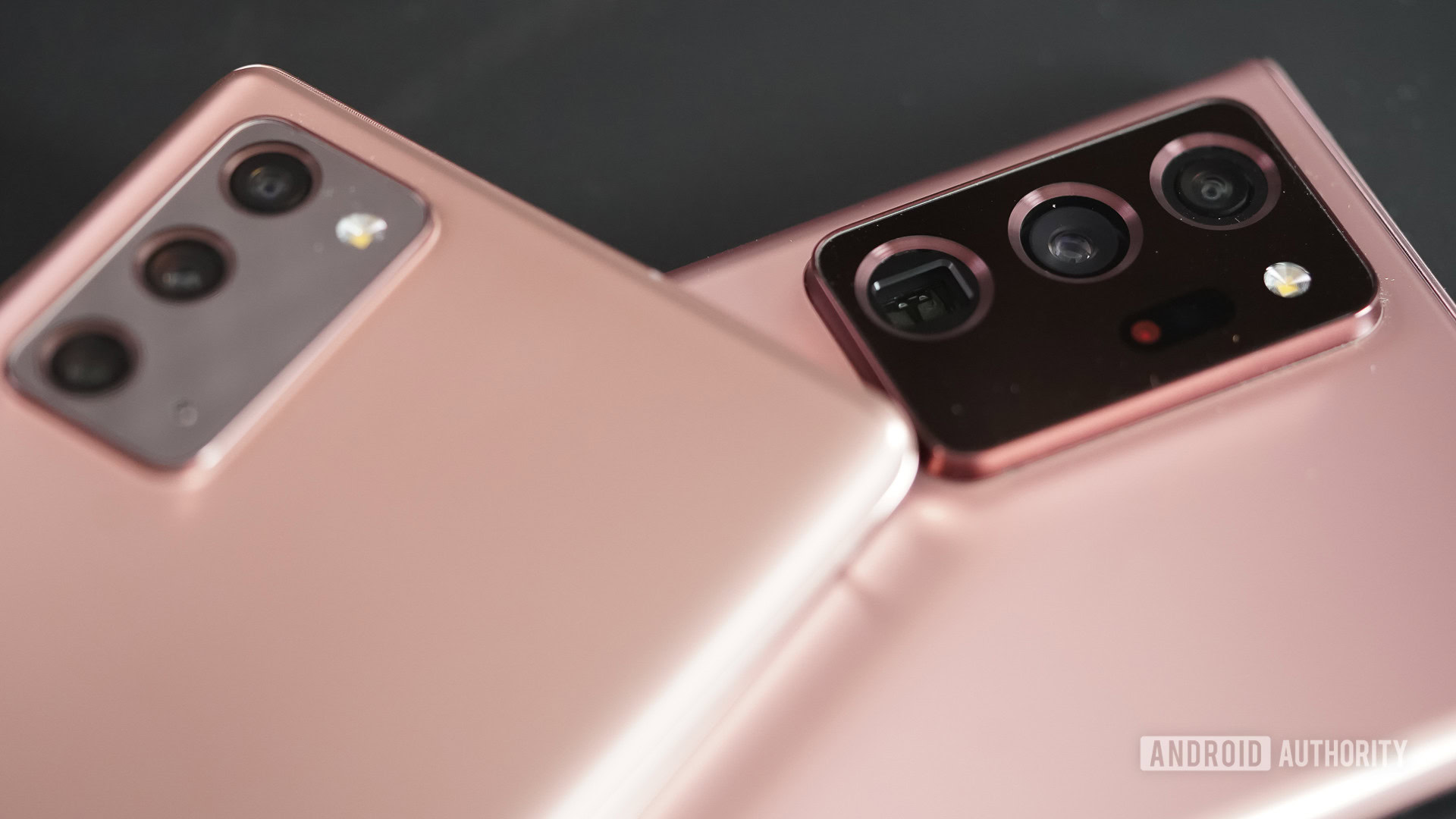
Unfortunately, unlike previous years, the standard Note 20 proved to be a downgrade in most ways. To begin with, the Note 20 eschewed the Ultra’s aluminum build for a ‘glasstic’ back. Downgrades extended to the display with the Note 20 packing a basic 60Hz panel. The camera setup was also downgraded to a last-gen 12MP primary, a 64MP telephoto sensor for hybrid optical zoom, and a 12MP ultrawide camera.
Elsewhere, as hardware saturation started creeping in, Samsung also started looking at broader ecosystem tie-ins. Principally, a close partnership with Microsoft and exclusive features when used with Windows 10 were designed to skew the buying decision for productivity fiends.
Sure, you can get the My Phone app on any Android phone. The Note 20 series allowed you to run all the apps from your phone, right there on your PC. In fact, you could even pin these apps to the start bar. The Note 20 series debuted the type of PC-Android integration that we’re yet to see anywhere else. At launch, the Note 20-series got first dibs on Xbox Game Pass ahead of other devices.
Galaxy Note 20 series facts:
- Samsung promised three generations of support for the Galaxy Note 20. Launching with Android 10, the phone should be getting updates all the way to Android 13.
- The primary camera on the Note 20 Ultra is a 108MP sensor that, when combined with the periscope lens, gives you up to 50x hybrid zoom.
- Like the Galaxy S20, both phones can now record up to 8K video. Good luck finding a screen to play that on, though!
Where’s the Samsung Galaxy Note 21?
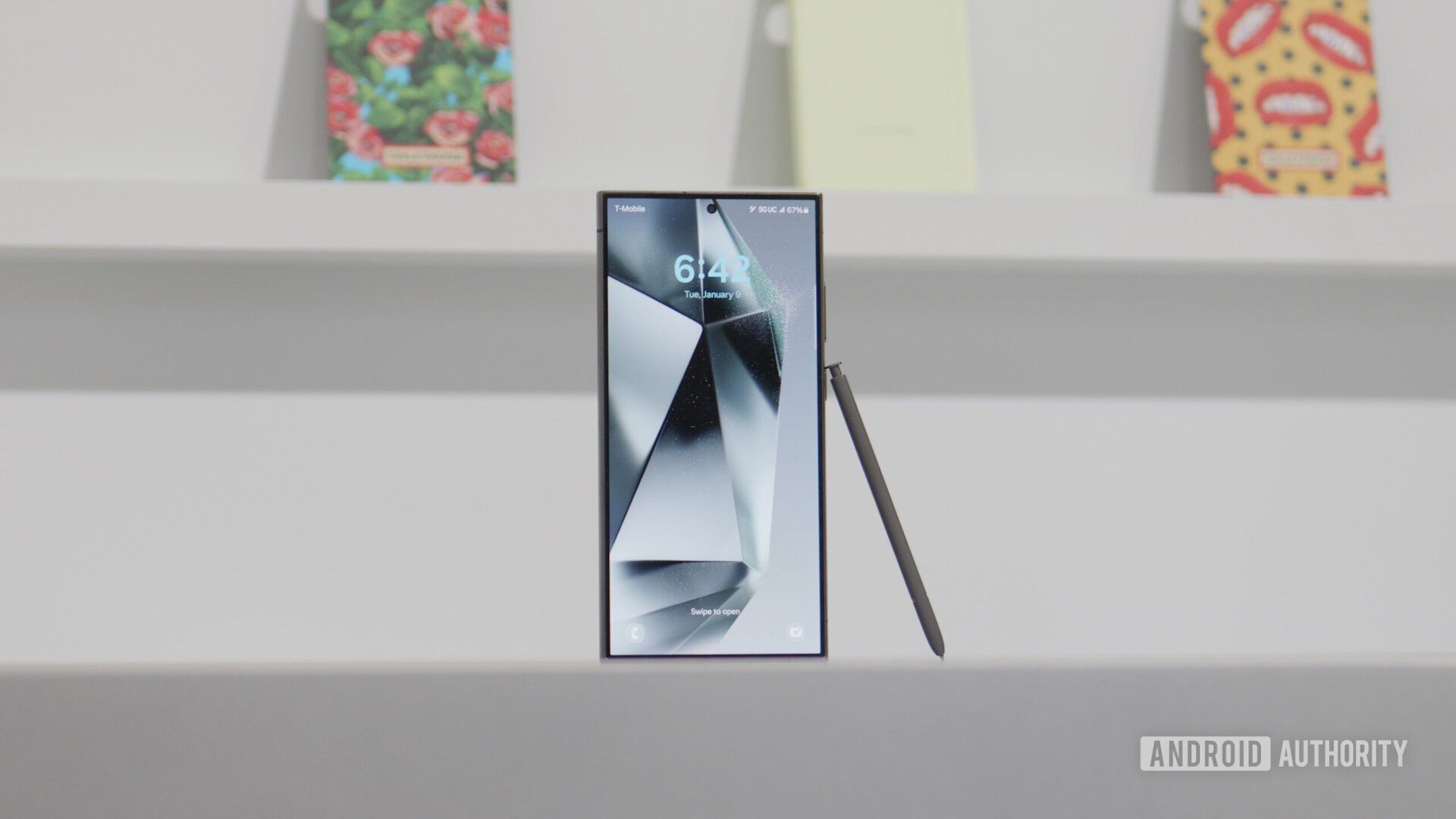
In 2021, Samsung shifted focus to its foldable lineup, and the Galaxy Z Fold 3 included support for stylus input. The Galaxy Z Fold 4 and Z Fold 5 got the same treatment.
The move was inevitable, considering the lackluster sales of the Note 20 series. In fact, Samsung only manufactured two-thirds of the units it had initially estimated for the Note series.
The last-gen cameras and lack of a slot for the stylus meant that the phone wasn’t quite ready to be a Note replacement. However, Samsung needs a prosumer selling point, and bringing it to the Fold, and not the Flip, made it clear that Samsung expects enthusiasts looking for the absolute best to gravitate to the Fold series.
Meanwhile, buyers who weren’t quite ready to splurge $1,500 or more on a smartphone could also take a look at the Galaxy S21 Ultra. Considering the general overlap in functionality between the Note and S-series, and the addition of S Pen support in the latter, it came as no surprise that Samsung didn’t see a future in continuing the Note lineup. The Ultra models replaced the Note series.
However, the Galaxy S21 Ultra was just the beginning. By giving the Galaxy S22 Ultra a slot for the stylus, Samsung essentially merged the two product lines. The Samsung Galaxy S23 Ultra continues the tradition, and so does the Samsung Galaxy S24 Ultra.
That concludes our look at every Samsung Galaxy Note smartphone to date. From a humble beginning to power-packed specs and a greater focus on software, the series has come a long way. Do you have a favorite Galaxy Note? Cast your vote in the poll below.